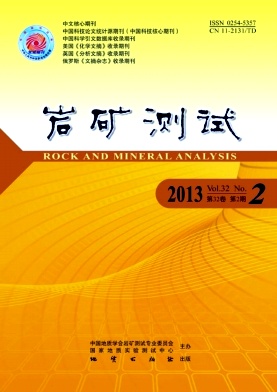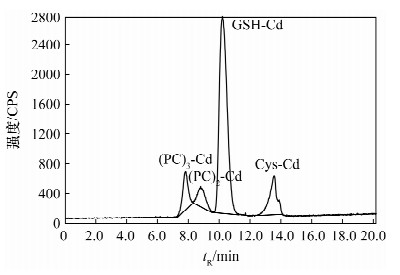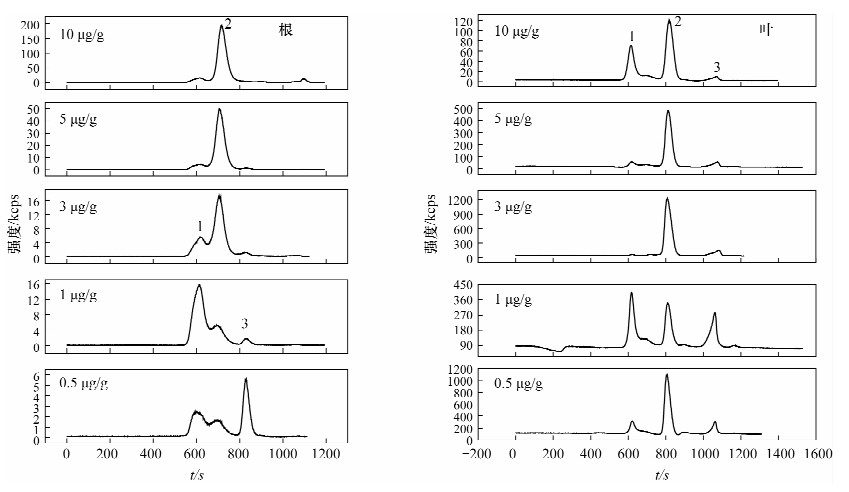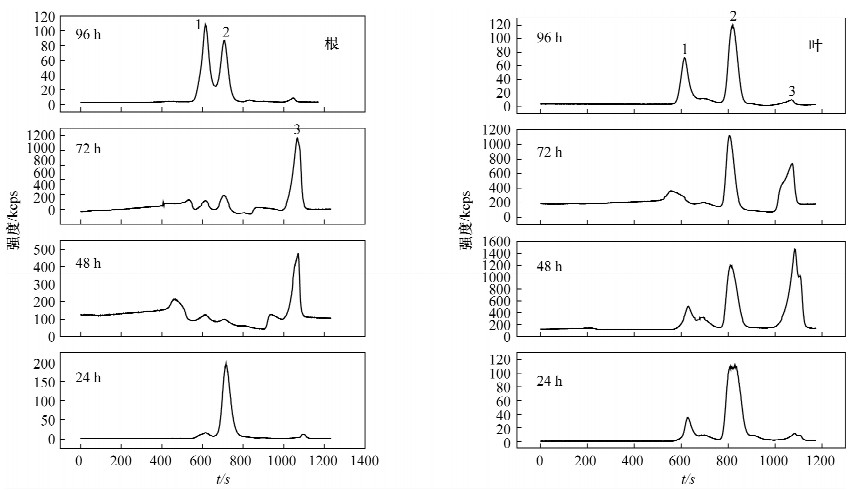| [1] |
Clemens S, Palmgren M G, Kramer U. A long way ahead: Understanding and engineering plant metal accumulation [J].Trends in Plant Science,2002,7(7): 309-315. doi: 10.1016/S1360-1385(02)02295-1
CrossRef Google Scholar
|
| [2] |
Clemens S. Toxic metal accumulation, responses to exposure and mechanisms of tolerance in plants [J].Biochimie,2006, 88(11): 1707-1719. doi: 10.1016/j.biochi.2006.07.003
CrossRef Google Scholar
|
| [3] |
Hall J L. Cellular mechanisms for heavy metal detoxification and tolerance [J].Journal of Experimental Botany, 2002, 53(366): 1-11.
Google Scholar
|
| [4] |
Yang X E, Feng Y, He Z L, Stoffella P J. Molecular mechanisms of heavy metal hyperaccumulation and phytoremediation [J].Journal of Trace Elements in Medicine and Biology, 2005,18(4): 339-353. doi: 10.1016/j.jtemb.2005.02.007
CrossRef Google Scholar
|
| [5] |
Belcastro M, Marino T, Russo N, Toscano M. The role of glutathione in cadmium ion detoxification: Coordination modes and binding properties—A density functional study[J].Journal of Inorganic Biochemistry, 2009, 103(1): 50 57. doi: 10.1016/j.jinorgbio.2008.09.002
CrossRef Google Scholar
|
| [6] |
Küpper H, Lombi E, Zhao F J, McGrath S P. Cellular compartmentation of cadmium and zinc in relation to other elements in the hyperaccumulator Arabidopsis halleri [J].Planta, 2000, 212(1): 75-84. doi: 10.1007/s004250000366
CrossRef Google Scholar
|
| [7] |
Salt D E, Prince R C, Pickering I J. Chemical speci-ation of accumulated metals in plants: Evidence from X-ray absorption spectroscopy[J].Microchemical Journal,2002, 71(2-3): 255-259. doi: 10.1016/S0026-265X(02)00017-6
CrossRef Google Scholar
|
| [8] |
Sarret G, Saumitou-Laprade P, Bert V, Proux O, Hazemann J L, Traverse A, Marcus M A, Manceau A. Forms of Zinc accumulated in the hyperaccumulator Arabidopsis halleri [J].Plant Physiology,2002,130(4): 1815-1826. doi: 10.1104/pp.007799
CrossRef Google Scholar
|
| [9] |
Sarret G, Willems G, Isaure M P, Marcus M A, Fakra S C, Frérot H, Pairis S, Geoffroy N, Manleau A, Saumitou-Laprade P. Zinc distribution and speciation in Arabidopsis halleri x Arabidopsis lyrata progenies present-ing various zinc accumulation capacities [J].New Phytologist, 2009, 184(3): 581-595. doi: 10.1111/nph.2009.184.issue-3
CrossRef Google Scholar
|
| [10] |
Callahan D L, Baker A J, Kolev S P, Wedd A G. Metal ion ligands in hyperaccumulating plants [J].Journal of Biological Inorganic Chemistry, 2006,11(1): 2-12. doi: 10.1007/s00775-005-0056-7
CrossRef Google Scholar
|
| [11] |
Haydon M J, Cobbett C S. Transporters of ligands for essential metal ions in plants [J].New Phytologist, 2007, 174(3): 499-506. doi: 10.1111/nph.2007.174.issue-3
CrossRef Google Scholar
|
| [12] |
Rauser W E. The role of thiols in plants under metal stress[M]//Brunold C,eds. Sulphur Nutrition and Sulphur Assimilation in Higher Plants. Switzerland: Paul Haupt Bern, 2000: 169-183.
Google Scholar
|
| [13] |
Wei Z G, Wong J W, Zhao H Y, Zhang H J, Li H X, Hu F. Separation and determination of heavy metals associated with low molecular weight chelators in xylem saps of Indian mustard (Brassica juncea)by size exclusion chromatograph and atomic absorption spectrometry [J].Biological Trace Element Research, 2007, 118(2): 146-158. doi: 10.1007/s12011-007-0022-z
CrossRef Google Scholar
|
| [14] |
di Toppi L S, Gabrielli R. Response to cadmium in higher plants[J].Environmental and Experimental Botany, 1999, 41(2): 105-130. doi: 10.1016/S0098-8472(98)00058-6
CrossRef Google Scholar
|
| [15] |
Leopold I, Schmide J, Neuman D, Günther D. Phytoche-latins and heavy metal tolerance[J].Phytochemistry, 1999, 50(8): 1323-1328. doi: 10.1016/S0031-9422(98)00347-1
CrossRef Google Scholar
|
| [16] |
Piechalack A, Tomaszewska B, Baralkiewicz D, Malecka A. Accumulation and detoxification of lead ions in legumes[J].Phytochemistry, 2002, 60(2): 153-162. doi: 10.1016/S0031-9422(02)00067-5
CrossRef Google Scholar
|
| [17] |
Zhao F J, Wang J R, Barker J H A, Schat H, Bleeker P M, McGrath S P. The role of phytochelatins in arsenic tolerance in the hyperaccumulator Pteris vittata [J].New Phytologist, 2003, 159(2): 403-410. doi: 10.1046/j.1469-8137.2003.00784.x
CrossRef Google Scholar
|
| [18] |
Verbruggen N, Hermans C, Schat H. Molecular mechan-isms of metal hyperaccumulation in plants [J].New Phytologist, 2009, 181(4): 759-776. doi: 10.1111/j.1469-8137.2008.02748.x
CrossRef Google Scholar
|
| [19] |
Ebbs S, Lau I, Ahner B, Kochian L. Phytochelatin synthesis is not responsible for Cd tolerance in the Zn/Cd hyperaccumulator Thlaspi caerulescenes (J. and C. Presl) [J].Planta,2002, 214(4): 635-640. doi: 10.1007/s004250100650
CrossRef Google Scholar
|
| [20] |
Sun Q, Ye Z H, Wang X R, Wong M H. Increase of glutathione in mine population of Sedum alfredii: A Zn hyperaccumulator and Pb accumulator [J].Phytochemistry, 2005,66(20): 2549-2556.
Google Scholar
|
| [21] |
Sun Q, Ye Z H, Wang X R, Wong M H. Cadmium hyperaccumulation leads to an increase of glutathione rather than phytochelatins in the cadmium hyper-accumulator Sedum alfredii [J].Journal of Plant Physiology,2007, 164(11): 1489-1498. doi: 10.1016/j.jplph.2006.10.001
CrossRef Google Scholar
|
| [22] |
Cobbett C S. A family of phytochelatin synthase genes from plant fungal and animal species[J].Trends in Plant Science, 1999, 4(9): 335-337. doi: 10.1016/S1360-1385(99)01465-X
CrossRef Google Scholar
|
| [23] |
Grill E, Winnacker E L, Zenk M H. Phytochelatins: The principal heavy-metal complexing peptides of higher plants [J].Science, 1985, 230(4726): 674-676. doi: 10.1126/science.230.4726.674
CrossRef Google Scholar
|
| [24] |
Schat H, Llugany M, Vooijs R, Hartley-Whitaker J, Bleeker P M. The role of phytochelatins in constitutive and adaptive heavy metal tolerances in hyperaccumulator and non-hyperaccumulator metallophytes [J].Journal of Experimental Botany, 2002,53(379): 2381-2392. doi: 10.1093/jxb/erf107
CrossRef Google Scholar
|
| [25] |
Yang H X, Liu W, Li B, Wei W, Zhang H J, Chen D Y.Speciation analysis of Cadmium in Indian mustard (Brassica Juncea) by size exclusion chromatography- high performance liquid chromatography-inductively coupled plasma mass spectrometry (SEC-HPLC-ICP-MS) [J].Chinese Journal of Analytical Chemistry,2009,37(10): 1511-1514. doi: 10.1016/S1872-2040(08)60137-1
CrossRef Google Scholar
|
| [26] |
杨红霞,刘崴,李冰,魏巍,张惠娟,陈登云.体积排阻高效液相色谱-电感耦合等离子体质谱法同时测定印度芥菜(Brassica Juncea)中镉铜锌形态[J].岩矿测试,2010, 29(1): 9-13.
Google Scholar
|







 DownLoad:
DownLoad:

